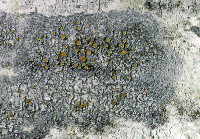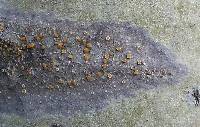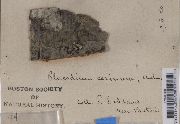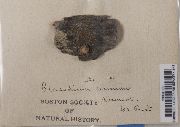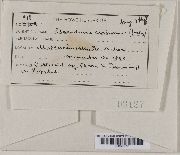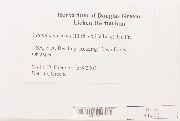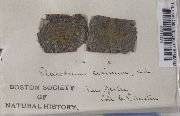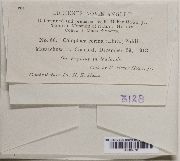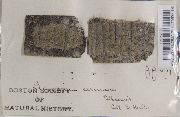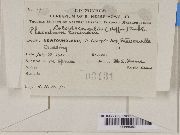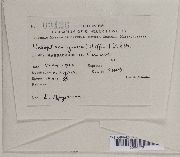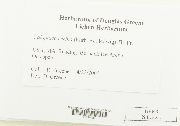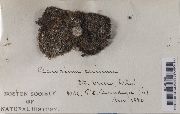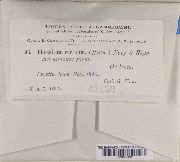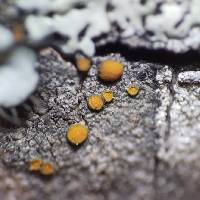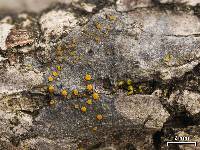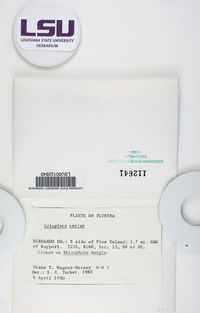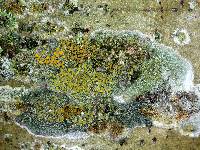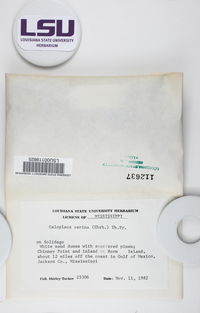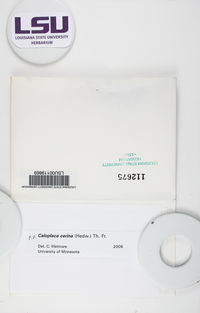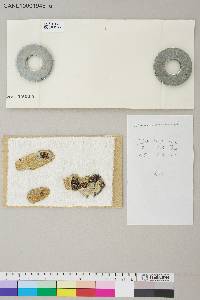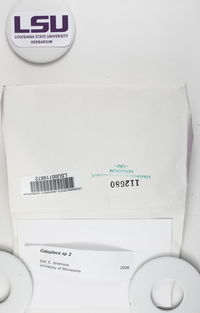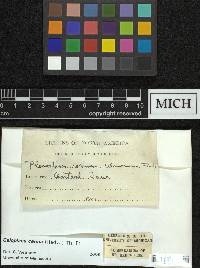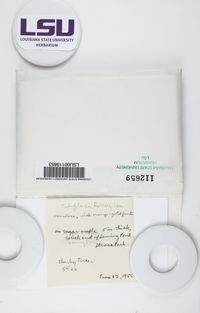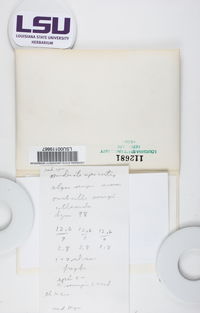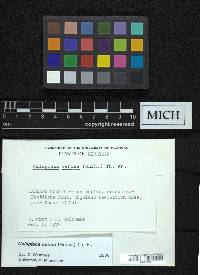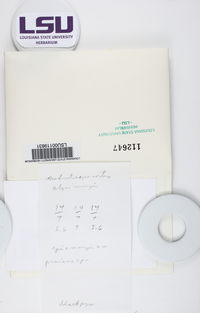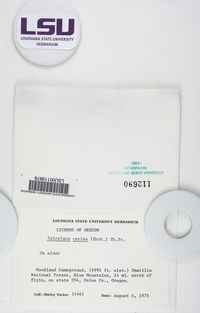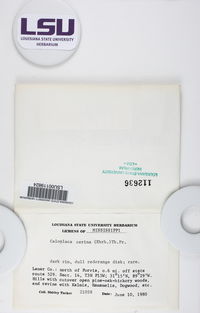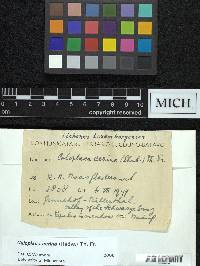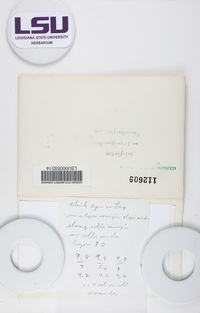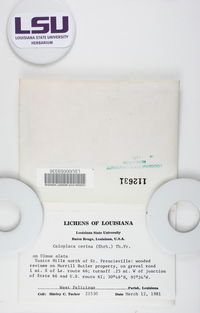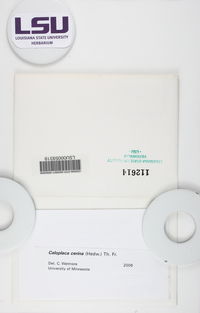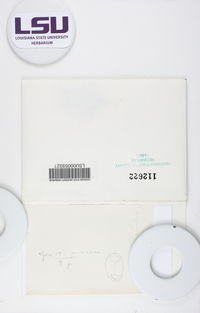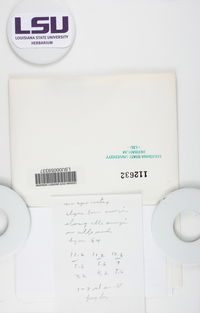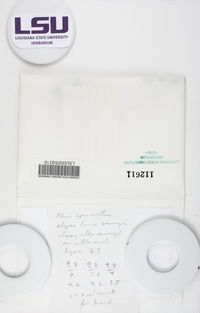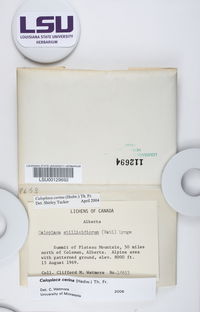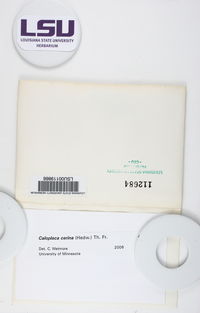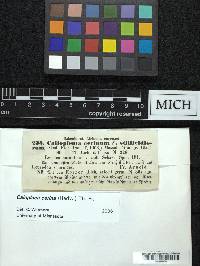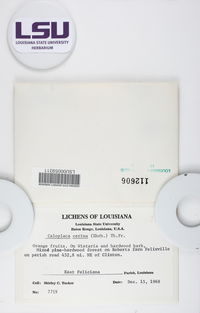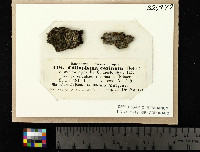
Consortium of Lichen Herbaria
- building a Global Consortium of Bryophytes and Lichens as keystones of cryptobiotic communities -
- Home
- Search
- Images
- Species Checklists
- US States: O-Z >
- US National Parks
- Central America
- South America
- US National Parks
- Southern Subpolar Region
|
|
|
|
Family: Teloschistaceae
Gray-rimmed Firedot
[Blastenia cerina (Hedw.) B. de Lesd., moreCallopisma cerinum (Hedw.) De Not., Callopisma cerinum f. cerinum (Hedw.) De Not., Callopisma cerinum f. saxicola Arnold, Callopisma cerinum var. austroamericana Räsänen, Callopisma cerinum var. austroamericanum Räsänen, Callopisma cerinum var. cerinum (Hedw.) De Not., Callopisma cerinum var. cyanoleprum (DC.) Walt. Watson, Callopisma cerinum var. fuscum A. Massal., Callopisma cerinum var. microcarpum Müll.Arg., Callopisma cerinum var. sorocarpa Vain., Caloplaca cerina f. cerina (Hedw.) Th. Fr., Caloplaca cerina var. anthracina (Ach.) H. Olivier, Caloplaca cerina var. cerina , Caloplaca cerina var. chloroleuca (Sm.) Th. Fr., Caloplaca cerina var. cyanolepra (DC.) J.J. Kickx, Caloplaca cerina var. ehrhartii (Schaer.) Trevis., Caloplaca cerina var. microcarpa (Müll.Arg.) Zahlbr., Lecanora cerina (Hedw.) Ach., Lecanora cerina var. cerina (Hedw.) Ach., Lecanora cerina var. squamulosa Wedd, Lecidea cerina (Hedw.) Schaer., Lecidea cerina var. cerina (Ehrh. ex Hedw.) Schaer., Lecidea cerina var. ehrhartii Schaer., Lichen cerinus Hedw., Parmelia cerina (Hedw.) Ach., Parmelia cerina var. cerina (Ehrh. ex Hedw.) Ach., Parmelia cerina var. chrysaspis Ach., Parmelia cerina var. ravida (Hoffm.) Ach., Patellaria cerina (Hedw.) Hoffm., Patellaria cerina var. cerina (Ehrh. ex Hedw.) Hoffm., Patellaria cerina var. cyanolepra DC., Placodium cerinum (Hedw.) Nägeli ex Hepp, Placodium cerinum f. cerinum (Hedw.) Nägeli ex Hepp, Placodium cerinum f. dispersum (H. Olivier) Szatala, Placodium cerinum f. fuscum (A. Massal.) Szatala, Placodium cerinum var. cerinum (Hedw.) Nägeli ex Hepp, Placodium cerinum var. flavum Anzi, Rinodina cerina (Hedw.) Gray, Teloschistes cerinus (Hedw.) Norman, Verrucaria cerina (Hedw.) Hoffm., Zeora cerina (Hedw.) Flot., Zeora cerina var. cerina (Ehrh. ex Hedw.) Flot.] |
Nash, T.H., Ryan, B.D., Gries, C., Bungartz, F., (eds.) 2007. Lichen Flora of the Greater Sonoran Desert Region. Vol 3. Life habit: lichenized Thallus: crustose, continuous or areolate, margin thinning at edge, without elongated lobes; prothallus: present, dark gray surface: gray or blue-gray, smooth, without asexual propagules cortex: cellular, c. 7 µm thick, without granules Apothecia: adnate, 0.3-1.5 mm in diam., lecanorine disc: orange, flat, epruinose or pruinose margin: persistent, slightly raised; thalline margin present, concolorous with thallus; proper margin not visible parathecium: including exciple below hypothecium irregular hyphae epihymenium: golden, K+ red, C- hymenium: hyaline, 55-70 µm tall paraphyses: 1-2 tip cells slightly swollen, with some branching or frequently branched; subhymenium hyaline asci: cylindrical, 8-spored ascospores: hyaline, 2 locules, ellipsoid, (11)12.5-14 x 5.5-7 µm, isthmus (4-)5.5-7 µm, spore end wall thin Pycnidia: present, mostly immersed, ostiole black Spot tests: apothecial margin K+ violet; thallus K+ violet Secondary metabolites: thalloidima green, parietin, fallacinal, and teloschistin. Substrate and ecology: on bark World distribution: worldwide Sonoran distribution: Arizona, southern California, and Baja California. Notes: Caloplaca cerina has a dark gray continuous thallus and apothecia with a dark thalline margin. Caloplaca pinicola is similar but has a verrucose areolate thallus with dark gray soredia. |
|
|
|
Powered by Symbiota



